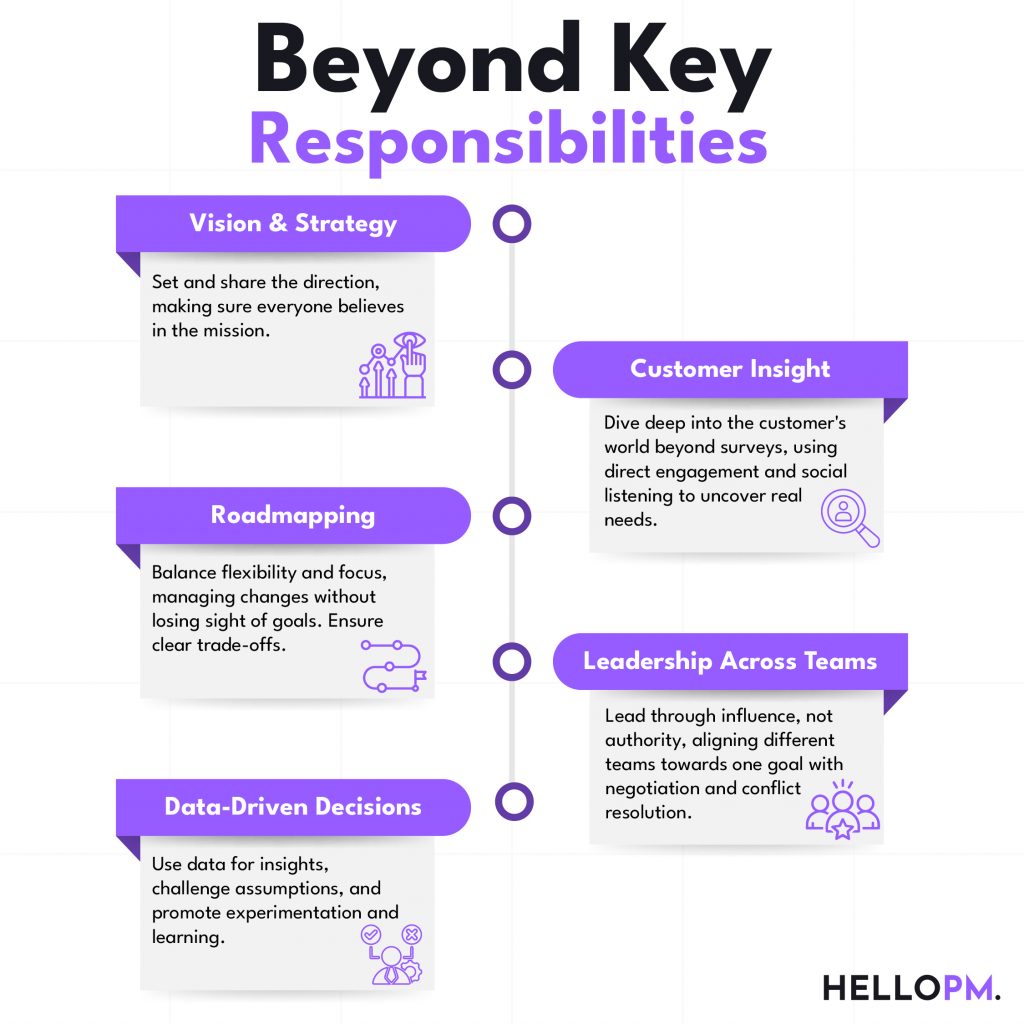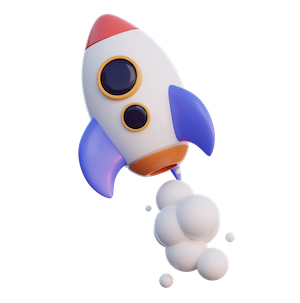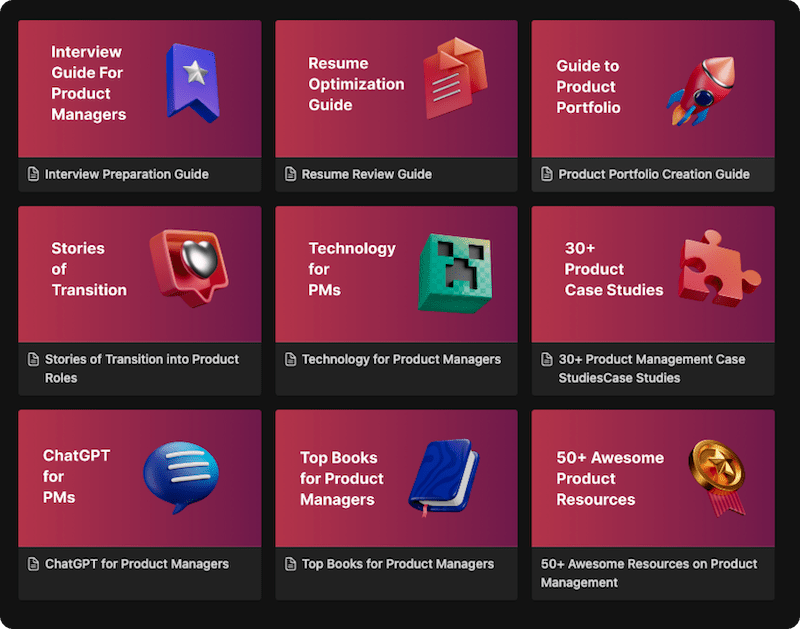Being a product manager is more than just organizing things or being the boss. It’s about leading with big ideas and really understanding what customers need.
Product managers have to be really good at understanding people, making plans, being flexible, talking well, and leading. While good product managers use these skills, the great ones dig deeper into each area to create amazing products.
This blog is going to talk about three simple things:
- What makes a great product manager stand out?
- Why is knowing how to balance everything a secret strength for a product manager?
- How can you get better at these important skills?
Traits of a ‘Great’ Product Manager
Empathy Expansion: A good PM not only grasps customer empathy but also spreads it to their teams. Actively understanding your team’s motivations and your stakeholders’ concerns directly influences your product’s success.
Leading by Doing: Visionary leadership means not only inspiring with words but also leading by example. Show commitment, resilience, and the courage to make tough decisions.
Thinking Strategically from All Angles: You must comprehend the wider industry landscape, spot potential disruptors, and position your product to capitalize on upcoming trends.
Communicating with Purpose: Achieving mastery in communication isn’t just about being clear but also involves actively listening, interpreting subtleties, and customizing your message for different audiences, including tech teams, executives, or customers.
Embracing Agility: The digital world changes constantly. Being agile means staying ahead of these changes, ready to adjust your strategy and vision with new insights and circumstances.

Step by Step guide to become a Great Product Manager
Self-Learning
While fields like business and engineering are common starting points, the interdisciplinary nature of product management also makes backgrounds in psychology, sociology, or liberal arts incredibly valuable for understanding human behavior and fostering innovative thinking.
Self-learning through online platforms like Hello PM, reading books by leading product thinkers, and following industry blogs can supplement formal education, offering fresh perspectives and specialized knowledge.
Gaining Practical Experience
- Cross-functional Projects: Volunteer for projects that require collaboration across different departments. This experience can simulate the cross-functional nature of product management.
- Technical Proficiency: While you don’t need to code, understanding the basics of software development, UX design principles, and data analytics can enhance your credibility and decision-making capabilities.
- Customer-facing Roles: Experience in customer support, sales, or marketing can provide invaluable insights into customer needs, pain points, and how the product is perceived in the market.
Building Essential Habits and Mindsets
- Curiosity and Continuous Learning: Great PMs have an insatiable curiosity about everything related to their product, market, and technology. They’re lifelong learners, always seeking to improve themselves and their products.
- Resilience and Adaptability: The path of product development is filled with setbacks and failures. Resilience in the face of these challenges, and the ability to adapt and learn from them, is key to long-term success.
- Customer Centricity: A relentless focus on the customer, making every decision with the customer in mind, and always seeking to better serve their needs and solve their problems.
Pathways to Becoming a Great Product Manager
- Mentorship: Seek out mentors among experienced PMs. Their guidance can help you navigate your career, avoid common pitfalls, and provide insights based on their experiences.
- Community Engagement: Participate in product management communities, both online and offline. Engaging with peers can provide support, insights, and opportunities to learn from others’ experiences.
- Personal Projects: Building your products, even as side projects, can be a powerful way to gain hands-on experience with the end-to-end process of product management, from ideation to launch and iteration.
- Embracing Challenges: Every challenge in product management, from shifting market dynamics to internal disagreements, is an opportunity to learn, grow, and refine your approach. Embracing these challenges with an open mind and a problem-solving attitude can distinguish good PMs from great ones.
The Essence of Balance in Product Management
In product management, balance is not just a buzzword but a fundamental principle that guides every decision and action. The concept extends beyond mere compromise; it involves harmonizing seemingly opposing forces to drive product success.
Balance ensures that product managers can navigate these complexities with grace, making informed decisions that benefit the product, the team, and the organization at large.
Tactical vs. Strategic Thinking
Tactical thinking involves focusing on the here and now—managing day-to-day operations, resolving immediate issues, and executing short-term plans. In contrast, strategic thinking requires looking at the bigger picture, planning for the future, understanding market trends, and setting long-term goals.
Mastering both is crucial; too much focus on the tactical, and you might lose sight of your product’s vision. Overemphasizing the strategy, and you could miss critical details that affect your product’s current success.
“A Dell software product manager exemplified this balance by allocating specific times for strategic planning while dedicating daily sessions to tackle tactical tasks. This approach allowed for immediate problem-solving and forward-thinking development, leading to their product’s successful launch and sustained growth.”
Tips: Allocate your week into blocks of time dedicated to each thinking mode. Use tools like Trello or Asana for tactical management, and reserve time for strategic brainstorming sessions that involve stakeholders and team leads.
Leadership and Teamwork
The balance here involves leading with conviction—making tough decisions, often under pressure, while fostering a collaborative, respectful team environment.
Product managers must navigate the delicate act of pushing the team towards excellence while maintaining their trust and motivation.
Tips: Practice empathetic leadership; understand your team’s strengths and challenges. Cultivate an environment where feedback is encouraged and valued. Celebrate wins, no matter how small, to build team spirit.
Intuition vs. Data-Driven Decision Making
This involves trusting your gut feelings about the market and the product while also relying on data and analytics to guide decisions.
Successful product managers know when to listen to their instincts and when to demand data to back up those instincts. They understand that intuition can lead to innovation, but data validates the direction.
“Airbnb’s decision to pivot from air mattresses to a global accommodation platform was partly intuitive, understanding the broader potential of their offering, and partly data-driven, observing user behaviour and market demand.”
Tips: Develop your intuition by staying close to your users and market; attend user interviews, read customer feedback, and immerse yourself in the product’s world. Simultaneously, cultivate a rigorous approach to data analysis; learn the basics of data analytics, use A/B testing, and make decisions based on insights from your user data.
Conclusion and Final Thoughts
The journey to becoming a great product manager is both challenging and rewarding. It requires a combination of skills, traits, and experiences, many of which are developed over time through deliberate practice, continuous learning, and a willingness to take on challenges.
By focusing on developing a deep understanding of your customers, cultivating leadership and strategic thinking, and building strong cross-functional relationships, you can position yourself as an invaluable asset to any organization and drive the success of your products.
 WATCH HELLOPM COHORT IN ACTION
WATCH HELLOPM COHORT IN ACTION



One thought on “What does a ‘Great’ product manager look like and how to become one”
Comments are closed.